
August 1, 2014
 "If trouble is around, yours truly will most likely get a chunk of it."
"If trouble is around, yours truly will most likely get a chunk of it."Richard Diamond, Private Detective proved to be the perfect radio vehicle for actor-singer Dick Powell, combining his tough-guy image, showcased in the 1944 film "Murder, My Sweet" and the 1945-46 radio series "Rogue's Gallery," with his tremendous talent for a song, as all those 1930s Warner Brothers/Fox musicals will bear out. The detective series, created by an aspiring screenwriter named Blake Edwards, featured a hard-boiled detective who rarely took himself too seriously; Edwards, the future director of the "Pink Panther" film series, conceived the Diamond character as an ex-cop who had decided to hang out his own shingle in the investigation business.
Richard Diamond bore a not-unintentional resemblance to another wisecracking detective of the airwaves, namely Sam Spade. Both shamuses - Powell as Diamond, Howard Duff as Spade - demonstrated a breezy insouciance that added a much-needed touch of levity to the type of detective show that was often in danger of sinking under the weight of its own clichés. The lighthearted tone of Richard Diamond was even evident in the program's weekly opening, which featured Powell whistling a jaunty "Leave it to Love." It was not uncommon, after cracking each weekly case, for "the singing detective" to sit down at the piano in the penthouse apartment of Helen Asher, his wealthy, red-headed love interest played by Virginia Gregg and also Frances Robinson, and serenade her with a number from the Hit Parade. In-jokes were rampant on the show; Richard would often make reference to other detectives (notably Sam Spade) and he had a particularly pronounced fondness for actress June Allyson — in real life, Mrs. Dick Powell.
Just as Spade had a love-hate relationship with Lieutenant Dundy, Diamond shared a similar bond with his contact on the force, homicide detective Lieutenant Walt Levinson (played at various times by Ed Begley, Ted de Corsia, Alan Reed, and Arthur Q. Bryan). The sarcastic badinage between the detective and his easily agitated cop pal provided many a memorable moment on the series. Diamond reserved his suffer-no-fools disdain for Sergeant Otis Ludlum, a cop who had such a force field of stupidity surrounding him that you just know he had to have a relative at City Hall looking after his job. Otis was played by actor Wilms Herbert, who also doubled on the show as Francis, Helen's faithful retainer; Francis had an uncanny, mood-killing knack of barging in at the most inopportune times, like when Diamond and Helen were getting ready to turn down the lights and pour the wine....
Richard Diamond, Private Detective debuted over NBC Radio on April 24, 1949 as a sustaining series, but picked up a sponsor in Rexall Drugs in June 1950. Camel Cigarettes picked up the tab as of January of 1951, just before the show moved to ABC, but by June the show was back with Rexall again, which continued its sponsorship until the program left the airwaves on June 27, 1952. The series would return briefly during the summer of 1953 for CBS, recycling earlier scripts from the 1950-51 season.
Like so many of his radio contemporaries, Richard Diamond later tried his luck on television in a series that ran sporadically from 1958 to 1960. Powell served as the show's producer but, since he was too busy to play the title role, he hired a young actor named David Meyer for the part - and then suggested he change his last name to Janssen. David Janssen was certainly game, but he simply didn't possess Powell's charm and joie de vivre -- even then he looked as if he was "The Fugitive," on the run from Barry Morse. If the TV series is remembered at all today, it's for the early exposure of actresses Barbara Bain and Mary Tyler Moore, with Moore playing "Sam," the telephone operator at Diamond's answering service -- a role which featured only her sexy voice and her gorgeous legs. Old Time Radio fans know, though, that their fix of Richard Diamond can only be satisfied by tuning in the one-and-only Dick Powell...and what better way than with these eighteen fully restored half-hour broadcasts, courtesy of RadioArchives.com. 9 hours. $26.98 Audio CDs / $13.49 Download
Special 50% discount Offer

 "Richard Diamond, Private Detective" proved to be the perfect radio vehicle for actor-singer Dick Powell, combining his tough-guy image, showcased in the 1944 film "Murder, My Sweet" and the 1945-46 radio series "Rogue's Gallery," with his tremendous talent for a song, as all those 1930s Warner Brothers/Fox musicals will bear out. The detective series, created by an aspiring screenwriter named Blake Edwards, featured a hard-boiled detective who rarely took himself too seriously; Edwards, the future director of the "Pink Panther" film series, conceived the Diamond character as an ex-cop who had decided to hang out his own shingle in the investigation business.
"Richard Diamond, Private Detective" proved to be the perfect radio vehicle for actor-singer Dick Powell, combining his tough-guy image, showcased in the 1944 film "Murder, My Sweet" and the 1945-46 radio series "Rogue's Gallery," with his tremendous talent for a song, as all those 1930s Warner Brothers/Fox musicals will bear out. The detective series, created by an aspiring screenwriter named Blake Edwards, featured a hard-boiled detective who rarely took himself too seriously; Edwards, the future director of the "Pink Panther" film series, conceived the Diamond character as an ex-cop who had decided to hang out his own shingle in the investigation business.Richard Diamond bore a not-unintentional resemblance to another wisecracking detective of the airwaves, namely Sam Spade (as in "The Adventures of"). Both shamuses - Powell as Diamond, Howard Duff as Spade - demonstrated a breezy insouciance that added a much-needed touch of levity to the type of detective show that was often in danger of sinking under the weight of its own clichés. (On one memorable broadcast from December 3, 1949, Powell is heard to crack "This is the hokiest case I've ever been on -- even the dialogue is bad.") The lighthearted tone of "Richard Diamond" was even evident in the program's weekly opening, which featured Powell whistling a jaunty "Leave it to Love." It was not uncommon, after cracking each weekly case, for "the singing detective" to sit down at the piano in the penthouse apartment of Helen Asher, his wealthy, red-headed love interest played by Virginia Gregg and also Frances Robinson, and serenade her with a number from the Hit Parade. In-jokes were rampant on the show; Richard would often make reference to other detectives (notably Sam Spade) and he had a particularly pronounced fondness for actress June Allyson — in real life, Mrs. Dick Powell. "Richard Diamond, Private Detective" debuted over NBC Radio on April 24, 1949. 10 hours. Regular Price $29.98 - Specially priced until August 14 for $14.99 Audio CDs / $7.49 Download
by Norvell W. Page writing as Grant Stockbridge
Read by Nick Santa Maria. Liner Notes by Will Murray
Back in 2011 when Tom Brown asked me to pick the series that would best launch the Will Murray Pulp Classics line of audiobooks, that was an easy one: The Spider!Nothing screamed pulp action like the Master of Men.
Picking the kickoff story was not so easy, because there were so many great ones. We decided to start with Prince of the Red Looters, in which the Spider first battled the Fly. Our customers loved it and begged for more. So we recorded Norvell W. Page’s debut tale, Wings of the Black Death. Eventually, we felt the pressure to release the inaugural story, The Spider Strikes, which we did with hesitation since this it was written by R.T.M. Scott, not Page in full cry. Customer comments applauded our decision. But that one was not an origin story, merely a first adventure.
Since then, we’ve released stories from different years. With 13 exciting Spider audiobooks now in print, a new question has been raised: Where does an interested customer start if he or she is new to the Spider?
That was a puzzler. So we recorded a new release––the perfect entry point for old and new Spider fans alike.
Ripped from the March, 1934 issue of the magazine, Citadel of Hell was the sixth Spider novel Novell W. Page penned, and one of his early tours de force. It opens with a wild car chase through the canyons of Manhattan that leads to the first of several running battles in which Richard Wentworth, both in and out of his Spider disguise, takes on Red Mask and his Food Destroyers as they bring New York City to its knees through a vicious campaign of arson and starvation.
This is the novel that introduced the Depression-era character of Tito Caliepi, the hunchbacked street-corner violinist disguise that over the next year or so of the series metamorphosed into the twisted, fearsome figure of the Spider who terrorized the underworld for ten unrelenting years.
So if you’ve never listened to a Spider audiobook––even if you have––and you’re looking to jump aboard, we highly recommend Citadel of Hell, one of the great fast-moving Spider novels of 1934.
For this special occasion, we told voice actor Nick Santa Maria to crank it up and give it his all. And he sure does! This exciting audiobook also includes two short stories, “Killer’s Knout” by Anson Hatch and G. T. Fleming Roberts’ “The Standing Corpse.”
Picking the kickoff story was not so easy, because there were so many great ones. We decided to start with Prince of the Red Looters, in which the Spider first battled the Fly. Our customers loved it and begged for more. So we recorded Norvell W. Page’s debut tale, Wings of the Black Death. Eventually, we felt the pressure to release the inaugural story, The Spider Strikes, which we did with hesitation since this it was written by R.T.M. Scott, not Page in full cry. Customer comments applauded our decision. But that one was not an origin story, merely a first adventure.
Since then, we’ve released stories from different years. With 13 exciting Spider audiobooks now in print, a new question has been raised: Where does an interested customer start if he or she is new to the Spider?
That was a puzzler. So we recorded a new release––the perfect entry point for old and new Spider fans alike.
Ripped from the March, 1934 issue of the magazine, Citadel of Hell was the sixth Spider novel Novell W. Page penned, and one of his early tours de force. It opens with a wild car chase through the canyons of Manhattan that leads to the first of several running battles in which Richard Wentworth, both in and out of his Spider disguise, takes on Red Mask and his Food Destroyers as they bring New York City to its knees through a vicious campaign of arson and starvation.
This is the novel that introduced the Depression-era character of Tito Caliepi, the hunchbacked street-corner violinist disguise that over the next year or so of the series metamorphosed into the twisted, fearsome figure of the Spider who terrorized the underworld for ten unrelenting years.
So if you’ve never listened to a Spider audiobook––even if you have––and you’re looking to jump aboard, we highly recommend Citadel of Hell, one of the great fast-moving Spider novels of 1934.
For this special occasion, we told voice actor Nick Santa Maria to crank it up and give it his all. And he sure does! This exciting audiobook also includes two short stories, “Killer’s Knout” by Anson Hatch and G. T. Fleming Roberts’ “The Standing Corpse.”
Whether you buy physical audiobooks, or simply download them, Citadel of Hell is an unforgettable excursion into the righteous madness that was the Spider, Master of Men! 6 hours $23.98 Audio CDs / $11.99 Download
A message from Will Murray:
With the release of Citadel of Hell, we've gone back to the early days of the great Spider pulp series. Several other Spider stories are already recorded for release. So many more thrilling Spider audiobooks lie in the future. But we've been wondering, if you could vote for your favorite Spider novel to be turned into an audiobook, what would it be?
So let's hear from you. If any Spider novel gets a majority of votes, we'll record it! If more than one is voted most popular, we'll record both. But you have to vote. Name your favorite Spider adventure and Radio Archives and Nick Santa Maria will bring it to life! Email to WillMurray@RadioArchives.com
Robert Weinberg Presents
Read by Nick Santa Maria
Horror is that unique genre that often combines with another field to create a classic story in both genres. Thus, there are quite memorable humorous horror novels, science fiction horror novels, and perhaps the most popular of all merges, the historical horror novel. With Hell Gate, award winning author, Elizabeth Massie delivers a horror novel aimed at lovers of authentic historical stories, and a historical novel that provides plenty of thrills and chills for readers of forgotten eras of historical interest.
Massie, who had written numerous historical novels, knows how to capture a time and place not our own but one of social cross currents that speak directly to us and our modern day concerns. Hell Gate tells the story of Suzanne Heath, a ticket vendor for Luna Park in 1909 Coney Island. The Boardwalk in those days was a garish, noisy place filled with bizarre shows, death-defying roller coasters, and wild and unusual shows. It is home to the tawdry, the grotesque and the unusual. A reluctant psychic, Suzanne has been approached by police Lieutenant Granger as a last chance effort to help discover and stop a killer all of whose victims have been found horribly mutilated. Suzanne feels obligated to help find and stop this maniac, but doing so forces her to remember her childhood, when her psychic gift earned her nothing but rejection, fear, and pain.
Suzanne's one true friend is Cittie Parker. Cittie is a young man who ran away from the Colored Waifs' Asylum and now performs as a bloodthirsty Zulu drummer in Dreamland on Coney Island. As Suzanne’s best friend, Cittie knows of her abilities. He fears for her safety. As Suzanne digs deeper into the grisly Coney Island murders and her own past, she finds herself and Cittie caught up in a nightmare where social worlds converge and collide. It’s a place where death beckons her forward. It’s a place where insanity grins wildly at her like a devil at the gate of hell.
Every step Suzanne takes brings her closer to a terrible fate for her and Cittie. At the beginning of the 20th century, it wasn’t considered proper for a genteel white woman to be friends with a black orphan. To some people, it is a crime whose penalty is death.
Elizabeth Massie writes a brilliant historical horror novel that illuminates one of the most interesting and yet ignored places and eras of American history. 9 hours $35.98 Audio CDs / $17.99 Download

Bob and one of his favorite writers, Dwight V. Swain.
Most fans of Western fiction know Paul S. Powers as one of the foundation authors of the famous pulp magazine of the 1930s and 1940s, Wild West Weekly, in which his popular characters Sonny Tabor, Kid Wolf, Freckles Malone, and Johnny Forty-five appeared for fifteen years.
Lesser known is the career Powers had after Wild West Weekly stopped publication in 1943. Powers continued to write for the best of the western fiction magazines throughout the 1940s. Now, here for the first time, are twelve Paul Powers stories written in the years after his Wild West Weekly career. Six of these were published in the leading western pulp magazines of the period. The other six, never published before, were discovered by Powers’ granddaughter Laurie in 2009.
Two of the published stories, “A Pard for Navajo Jack,” and “Judgment Day on Whisky Trail,” appeared in Thrilling Western in 1947 and 1948. “Hangnoose for a Prodigal” appeared in Thrilling Ranch Stories in March 1948. “Buzzards Hate Bullets” was published in Exciting Western in November 1947. The two other stories, “Boothill is My Destination,” that appeared in Texas Rangers in December 1947, and “Death is Where You Find It” in Rio Kid Western in August 1949, were imprints of Better Publications.
All of the stories in this collection reflect a new style that Powers had to adopt in the early 1940s. His earlier Wild West Weekly style was geared towards its adolescent audience and full of the “blood and thunder” that was indicative of the pulp westerns during that period. Writing stories for Wild West Weekly was a highly lucrative trade for my grandfather, but he had to change course and relearn his craft when the old style was no longer popular. No longer were heroes to be the semi-super human cowboys who survived hundreds of bullet wounds and shoot targets with jaw dropping speed and accuracy. They were now to be more mature and sometimes with a darker look on life. Heroes that for years were clean-cut, highly moral and almost puritan in their habits were replaced by lead characters who drank, smoked, and swore.
But Powers rose to the task and continued to have his stories published through the 1940s and into the early 1950s. These twelve stories are representative of that era; they make for an outstanding collection of frontier stories that represent the glory years of the Western short story and the best of Powers’ prolific pulp career. Read by James C. Lewis. 8 hours $31.98 Audio CDs / $15.99 Download
Check out our Facebook Audiobook page!
 Join Will Murray, Robert Weinberg, Radio Archives, the Authors and Voice Actors discussing all the new audiobooks. Take a look and leave a comment.
Join Will Murray, Robert Weinberg, Radio Archives, the Authors and Voice Actors discussing all the new audiobooks. Take a look and leave a comment.
New Will Murray's Pulp Classics eBooks
The best of timeless Pulp now available as cutting edge eBooks! Will Murray's Pulp Classics brings the greatest heroes, awesome action, and two fisted thrills to your eReader! Presenting Pulp Icons such as the Spider and G-8 and His Battle Aces as well as wonderfully obscure characters like the Octopus and Captain Satan. Will Murray's Pulp Classics brings you the best of yesterday's Pulp today!
The Spider #98 November 1941 Volunteer Corpse Brigade
“Might Is Right!” — that was the war cry of the powerful Underworld Union which Smiler Miordan led against the nation — behind a barrage of deadly plague-germs! Could the Spider, himself infected, crush this martinet of murder — with only a pitiful army of dying patriots? Another epic exploit of America’s best-loved pulp-fiction character of the 1930s and 1940s: The Spider — Master of Men! Richard Wentworth — the dread Spider, nemesis of the Underworld, lone wolf anti-crime crusader who always fights in that grim no-man’s land between Law and lawless — returns in vintage pulp tales of the Spider, reissued for today’s readers in electronic format.. $2.99.
“Might Is Right!” — that was the war cry of the powerful Underworld Union which Smiler Miordan led against the nation — behind a barrage of deadly plague-germs! Could the Spider, himself infected, crush this martinet of murder — with only a pitiful army of dying patriots? Another epic exploit of America’s best-loved pulp-fiction character of the 1930s and 1940s: The Spider — Master of Men! Richard Wentworth — the dread Spider, nemesis of the Underworld, lone wolf anti-crime crusader who always fights in that grim no-man’s land between Law and lawless — returns in vintage pulp tales of the Spider, reissued for today’s readers in electronic format.. $2.99.
Dime Mystery Magazine Frances Bragg Middleton and B. B. Fowler
In 1934 a new type of magazine was born. Known by various names — the shudder pulps, mystery-terror magazines, horror-terror magazines — weird menace is the sub-genre term that has survived today. Dime Mystery Magazine was one of the most popular. It came from Popular Publications, whose publisher Harry Steeger was inspired by the Grand Guignol theater of Paris. This breed of pulp story survived less than ten years, but in that time, they became infamous, even to this day. This ebook contains a collection of stories from the pages of Dime Mystery Magazine, all written by Frances Bragg Middleton and B. B. Fowler, reissued for today’s readers in electronic format. $2.99.
In 1934 a new type of magazine was born. Known by various names — the shudder pulps, mystery-terror magazines, horror-terror magazines — weird menace is the sub-genre term that has survived today. Dime Mystery Magazine was one of the most popular. It came from Popular Publications, whose publisher Harry Steeger was inspired by the Grand Guignol theater of Paris. This breed of pulp story survived less than ten years, but in that time, they became infamous, even to this day. This ebook contains a collection of stories from the pages of Dime Mystery Magazine, all written by Frances Bragg Middleton and B. B. Fowler, reissued for today’s readers in electronic format. $2.99.
G-8 and His Battle Aces #93 August 1941 Death Is My Destiny
The battle guns are silent in the grim, gray dawn of war — and the legions of horror march unopposed over the fallen bodies of their foe... While terror prowls the night skies, and death lurks in ambush behind every cloud, G-8 and his Battle Aces face the wildest adventure of their careers, as they combat the fiendish force that is wiping the Allied forces from the face of the earth — without a shot being fired! G-8 and his Battle Aces rode the nostalgia boom ten years after World War I ended. These high-flying exploits were tall tales of a World War that might have been, featuring monster bats, German zombies, wolf-men, harpies, Martians, and even tentacled floating monsters. Most of these monstrosities were the work of Germany’s seemingly endless supply of mad scientists, chief of whom was G-8’s recurring Nemesis, Herr Doktor Krueger. G-8 battled Germany’s Halloween shock troops for over a decade, not ceasing until the magazine folded in the middle of World War II. G-8 and his Battle Aces return in vintage pulp tales, reissued for today’s readers in electronic format. $2.99.
The battle guns are silent in the grim, gray dawn of war — and the legions of horror march unopposed over the fallen bodies of their foe... While terror prowls the night skies, and death lurks in ambush behind every cloud, G-8 and his Battle Aces face the wildest adventure of their careers, as they combat the fiendish force that is wiping the Allied forces from the face of the earth — without a shot being fired! G-8 and his Battle Aces rode the nostalgia boom ten years after World War I ended. These high-flying exploits were tall tales of a World War that might have been, featuring monster bats, German zombies, wolf-men, harpies, Martians, and even tentacled floating monsters. Most of these monstrosities were the work of Germany’s seemingly endless supply of mad scientists, chief of whom was G-8’s recurring Nemesis, Herr Doktor Krueger. G-8 battled Germany’s Halloween shock troops for over a decade, not ceasing until the magazine folded in the middle of World War II. G-8 and his Battle Aces return in vintage pulp tales, reissued for today’s readers in electronic format. $2.99.
Fighting Aces #27 July 1944 Greenland Patrol
Fighting Aces was the youngest in the line of Popular Publications aviation pulps. It was strictly a product of World War II. The inaugural issue was published with a March 1940 date on the cover, as the world war was raging through Europe. After D-Day and the war began winding down, the pulp was closed down as well. After twenty-seven issues, the July 1944 magazine was the last one published. But during those glorious twenty-seven issues, American doughboys fought alongside the French, English, Australian and Canadian Allies in battle after aerial battle... pitting their skill against the Nazi scum. Fighter planes burst into flame and spiral to earth in these WWII tales of soaring action. Fighting Aces return in vintage pulp tales, reissued for today’s readers in electronic format. $2.99.
Fighting Aces was the youngest in the line of Popular Publications aviation pulps. It was strictly a product of World War II. The inaugural issue was published with a March 1940 date on the cover, as the world war was raging through Europe. After D-Day and the war began winding down, the pulp was closed down as well. After twenty-seven issues, the July 1944 magazine was the last one published. But during those glorious twenty-seven issues, American doughboys fought alongside the French, English, Australian and Canadian Allies in battle after aerial battle... pitting their skill against the Nazi scum. Fighter planes burst into flame and spiral to earth in these WWII tales of soaring action. Fighting Aces return in vintage pulp tales, reissued for today’s readers in electronic format. $2.99.
99 cent eBook Singles
Each 99 cent eBook Single contains a single short story, one of the many tales selected from the pages of Dime Mystery and Terror Tales. These short stories are not included in any of our other eBooks.
They told her it was suicide, but Jael Lavendar knew that her sister, Judith, had been murdered, for she believed that, through the bond of twinhood, Judith spoke from the grave... In 1934 a new type of magazine was born. Known by various names — the shudder pulps, mystery-terror magazines, horror-terror magazines — weird menace is the sub-genre term that has survived today. Terror Tales was one of the most popular. It came from Popular Publications, whose publisher Harry Steeger was inspired by the Grand Guignol theater of Paris. This breed of pulp story survived less than ten years, but in that time, they became infamous, even to this day. This ebook contains a classic story the pages of Terror Tales, reissued for today’s readers in electronic format. $0.99.
Even death did not release Bill Bolger from his life-long battle with his uncle. In fact, the old man was a far more fearsome and powerful antagonist — dead!. In 1934 a new type of magazine was born. Known by various names — the shudder pulps, mystery-terror magazines, horror-terror magazines — weird menace is the sub-genre term that has survived today. Terror Tales was one of the most popular. It came from Popular Publications, whose publisher Harry Steeger was inspired by the Grand Guignol theater of Paris. This breed of pulp story survived less than ten years, but in that time, they became infamous, even to this day. This ebook contains a classic story the pages of Terror Tales, reissued for today’s readers in electronic format. $0.99.
All eBooks produced by Radio Archives are available in ePub, Mobi, and PDF formats for the ultimate in compatibility. When you upgrade to a new eReader, you can transfer your eBooks to your new device without the need to purchase anything new.

The pulp era's legendary superman journeys to the South America in two action-packed novels by Harold A. Davis and Lester Dent writing as "Kenneth Robeson." First, explorers return from the Matto Grosso jungle with news of a recently discovered lost city and evidence that Johnny Littlejohn has already succumbed to a deadly malady! Can the Man of Bronze prevent "The Green Death" from spreading throughout the United States? Then, the kidnapping of Monk Mayfair leads Doc Savage to South America and the bizarre mystery of the "Rock Sinister." BONUS: a behind-the-scenes look at the 1975 Doc Savage movie! This instant collector's item leads off with the classic pulp covers by Emery Clarke and Modest Stein, the original interior illustrations by Paul Orban and historical commentary by Will Murray, author of fourteen Doc Savage novels. Double Novel Reprint $14.95
by Will Murray and Ryerson Johnson, writing as Kenneth Robeson, cover illustration by Joe DeVito
All over the Midwest, cars and trucks were crashing—stopped in their tracks by an inexplicable force! Had some unseen power targeted America’s automotive industry—or was something more sinister at stake?
Summoned to solve the mystery, Doc Savage and his intrepid men follow a trail of terror that winds through the continental United States like a constricting serpent of senseless destruction.
Summoned to solve the mystery, Doc Savage and his intrepid men follow a trail of terror that winds through the continental United States like a constricting serpent of senseless destruction.
From the nation’s car capital to the North Pole, the Man of Bronze races to stave off a strangely familiar menace only to confront a completely unexpected foe—the enigmatic Baron in Black! Softcover $24.95

The Knight of Darkness battles murderous supervillains in two thrilling pulp novels by Walter B. Gibson writing as "Maxwell Grant." First, The Shadow wages a final battle against his greatest enemy, Shiwan Khan, in "Masters of Death." Then, savage drums promise eerie menace when Professor MacAbre attempts to bring "Voodoo Death" to The Shadow and Margo Lane! BONUS: A murderous Shadow uses the power of invisibility for evil and sets a deadly trap for Lamont Cranston in "The Shadow Challenged." Which Shadow will have the last laugh? This deluxe pulp reprint showcases the original color pulp covers by Graves Gladney and Modest Stein and the classic interior illustrations by Edd Cartier and Paul Orban with historical commentary by Will Murray and Anthony Tollin. Double Novel Reprint $14.95




Special Chet Williamson Issue! IThis is the special Chet Williamson issue of Weird Tales, which features an interview and 3 stories by Williamson. Also features contributions from Ian Watson, R. Bretnor, Fred Chappell, and Stephen King! 148 pages. After the original magazine operation folded in 1954, there were several brief attempts to revive it — reprint anthologies in the ’60s, four new magazine issues in the ’70s, four original paperbacks in the early ’80s — before the resurrection finally achieved full-fledged afterlife under editor-publishers George H. Scithers, Darrell Schweitzer and John Gregory Betancourt. Beginning in 1988, Weird Tales has been published more or less continuously. These 25 year old magazines are Brand new and have never been read. Radio Archives is proud to have a large inventory so that everyone can have a copy of this great magazine. $9.95
Most of the issues were sold last newsletter. We have lowered the price one more dollar to clear them all out in the next few days.
Comments From Our Customers!
Curtis Cobb writes:
Thank you Tom and company for always outstanding service and products. Take care and thank you.
Thank you Tom and company for always outstanding service and products. Take care and thank you.
Joseph Baneth Allen on Facebook writes:
Just finished listening to "Box Thirteen - Adventure Wanted" released by Radio Archives. "Box Thirteen" was an original radio series that lasted for, if memory serves me correctly, about 50 half-hour episodes back in 1948 that starred movie actor Alan Ladd in the role of Dan Holiday - a former reporter for the Star-Times - now a modestly successful novelist who gets ideas for his stories by running an ad in the Star-Times that reads - verbatim here - "Adventure Wanted. Will Go Anywhere, Will Do Anything. Write Box 13 in care of Star-Times."
Dan Holiday never knew what he was letting himself in for whenever he personally answered a letter to Box Thirteen asking for his assistance in some matter, and he had some pretty hair raising adventures.
In the last episode of the original radio series, Suzie, Dan's secretary, asks him if he's going to continue on with Box Thirteen, and he responds that he doesn't know. The last case had disturbed them both a bit. So it's nice to see that Radio Archives commisioned six new prose adventures of Dan Holiday taking typewriter in hand once more and answering the mail that arrives to Box Thirteen. Written by Bobby Nash, Jim Beard, Andrew Salmon, and Barry Reese; these new advenutes of Dan Holiday include: "The Mystery of The Missing Manuscript," "The Horror of the Plague Doctor," "The Out of this World Affair," "Room 13," "The Game's Afoot, Mr. Holiday," and "Kaledioscope."
All six of these stories capture the full flavor of the original Box Thirteen radio series, while adding new depth and range to the main characters, and its nice to see Suzie shine in her own right. I hope Radio Archives will let Dan Holiday and Suzie have more adventures courtesy of the letters that arrive to Box Thirteen.
Nick Santa Maria brings Dan Holiday, Suzie, and the world of Box Thirteen to a vividly splendid life.
Strongly Recommened! Five Stars!
If you'd like to share a comment with us or if you have a question or a suggestion send an email to Service@RadioArchives.com. We'd love to hear from you!
3 ways to order.
1. Website RadioArchives.com
2. Phone 800-886-0551
3. Email Reply to this email with what you want to order. Payment information will be sent to you.
Whichever method you prefer, order by 7:30pm EDT and your order is mailed today!




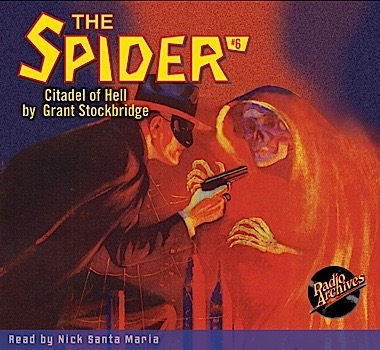

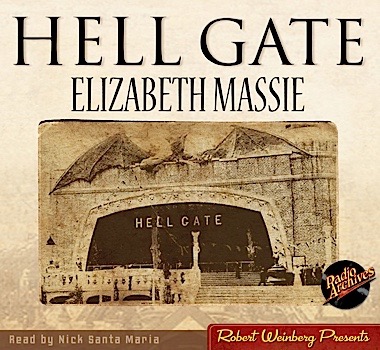

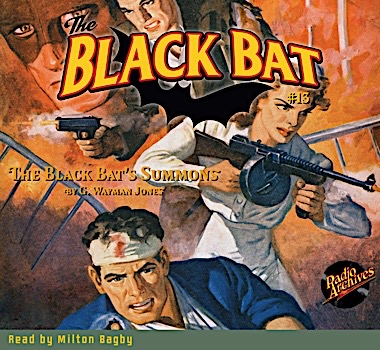

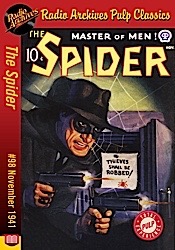
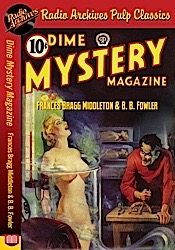
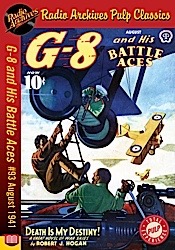
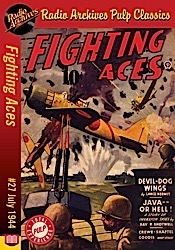
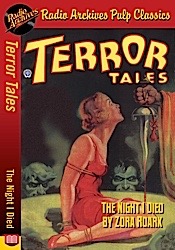
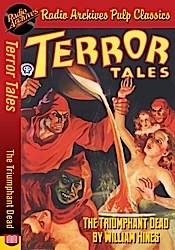





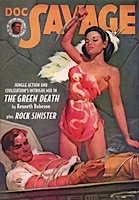

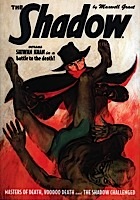



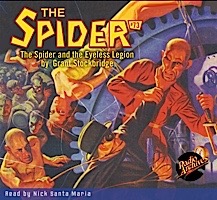
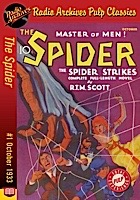












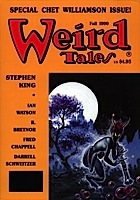

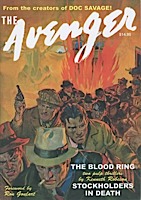
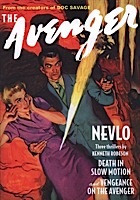
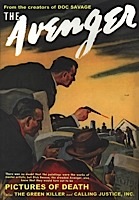
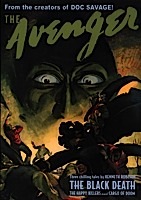
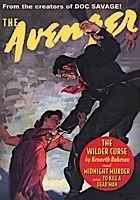
Thank you, your article is very good
ReplyDeleteviagra asli
jual viagra
toko viagra
toko viagra asli
jual viagra asli
viagra jakarta
viagra asli jakarta
toko viagra jakarta
jual viagra jakarta
agen viagra jakarta
agen viagra
cialis asli
cialis jakarta
cialis asli jakarta
titan gel asli
titan gel jakarta
titan gel asli jakarta
viagra cod jakarta
obat viagra jakarta
obat viagra asli
viagra usa
viagra original
obat viagra
obat kuat viagra
jual cialis
toko cialis
obat cialis
obat cialis asli
obat kuat cialis
obat cialis jakarta
toko cialis jakarta
jual cialis jakarta
agen cialis jakarta
toko titan gel
jual titan gel
vitamale asli
permen soloco asli
maxman asli
hammer of thor
vimax asli
hammer of thor asli